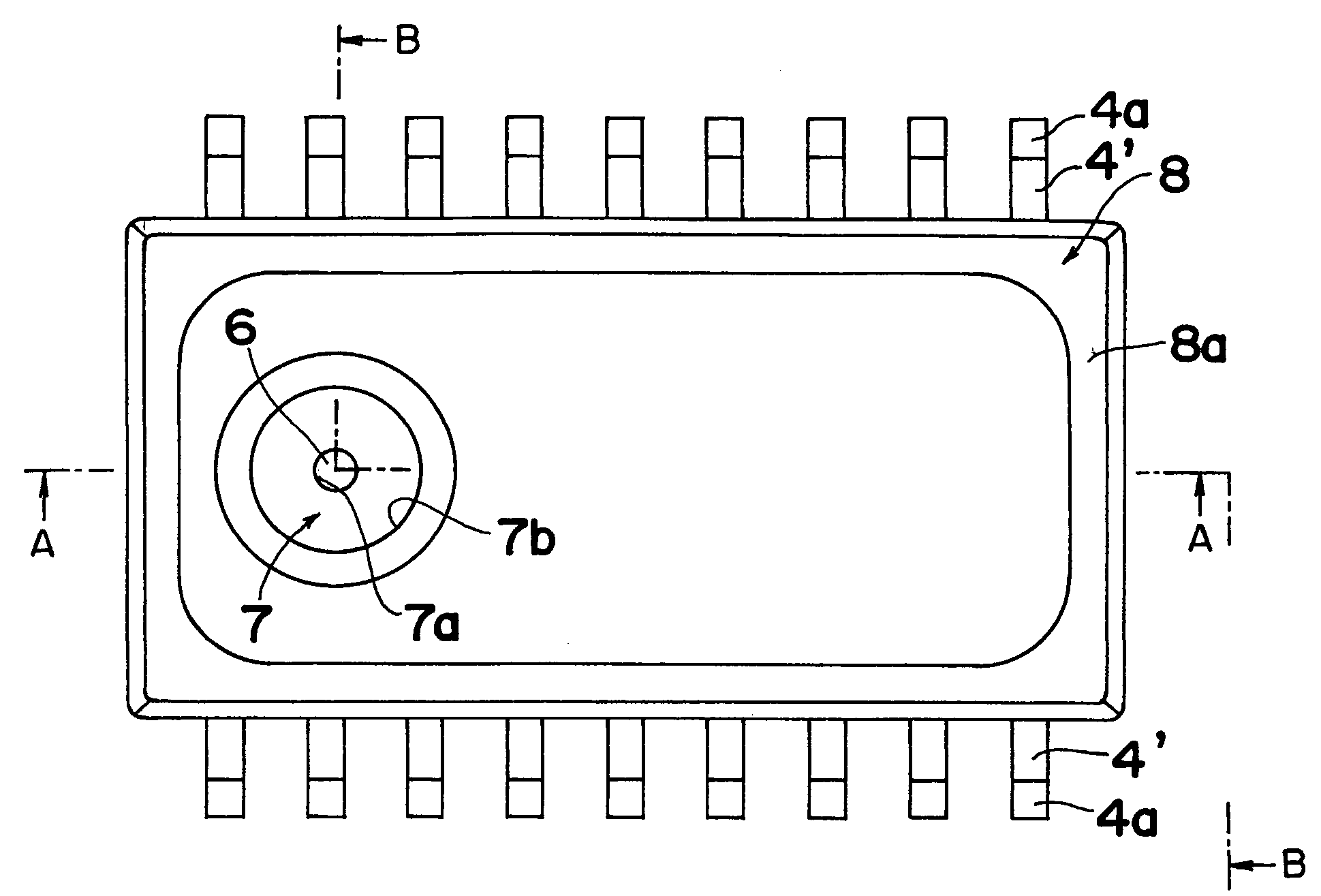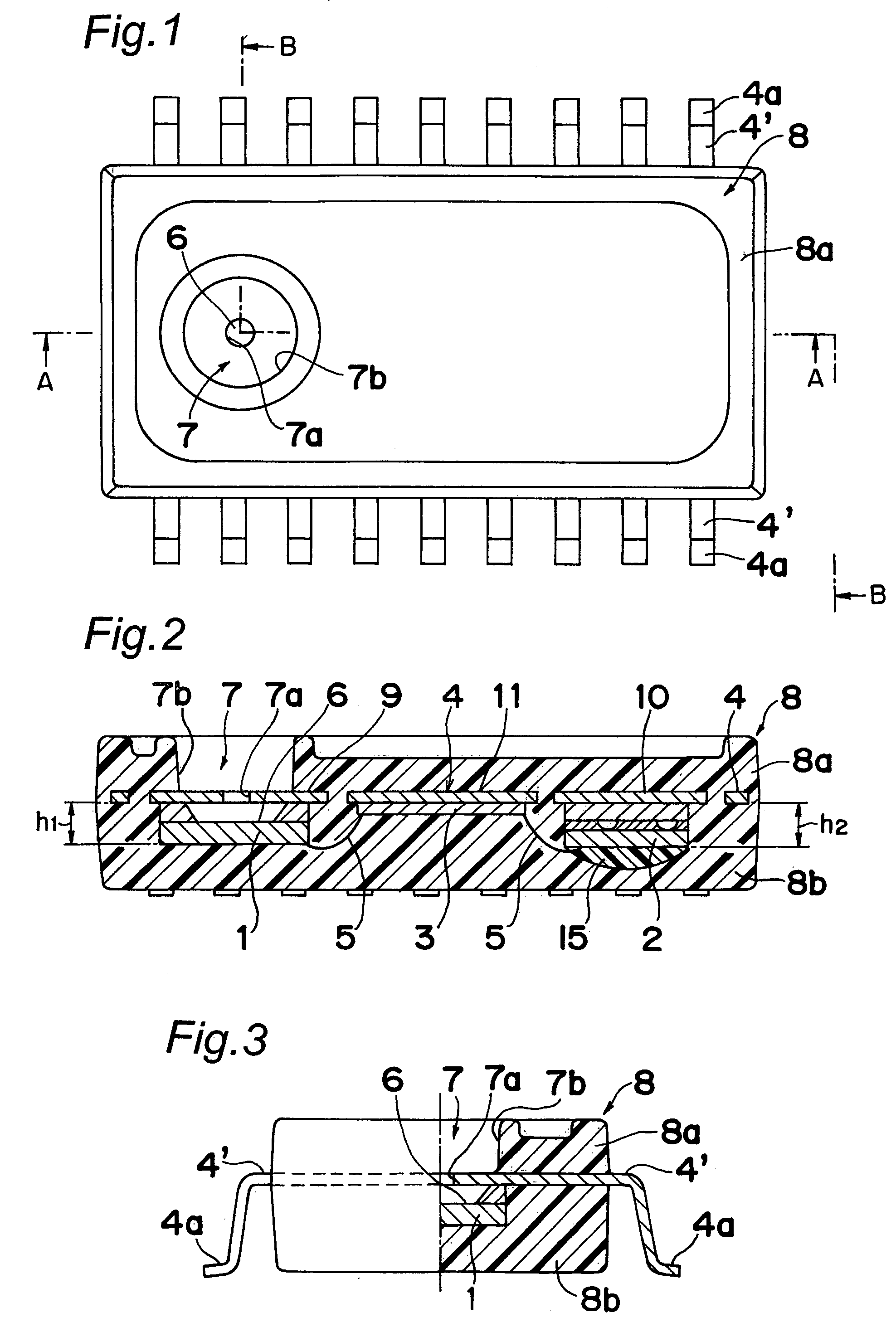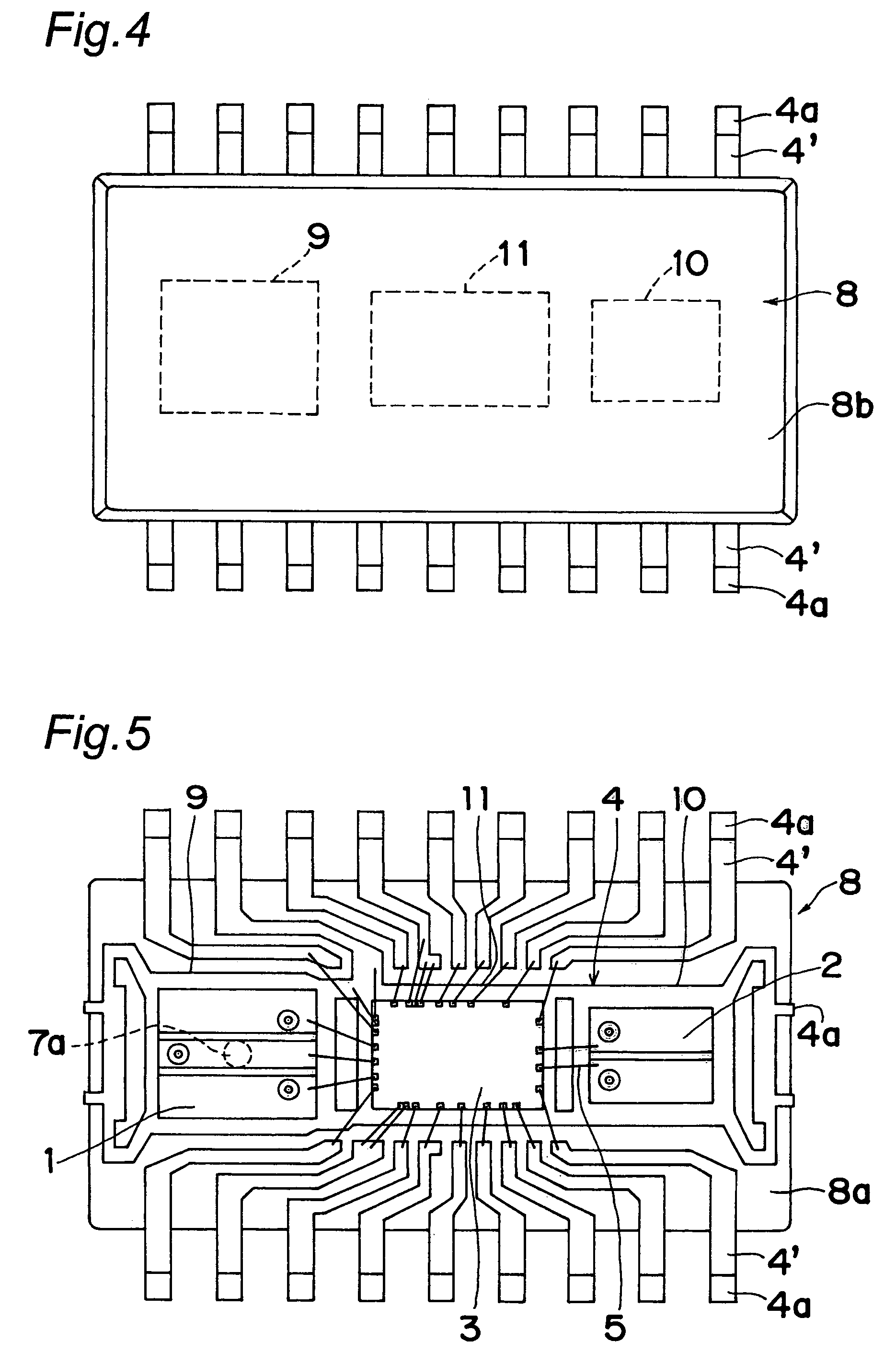Sensor device
a sensor and sensor technology, applied in the field of sensor units, can solve the problems of higher power consumption of the compound sensor unit, and achieve the effects of reducing shock, enhancing measurement accuracy, and suppressing acceleration sensor deformation
- Summary
- Abstract
- Description
- Claims
- Application Information
AI Technical Summary
Benefits of technology
Problems solved by technology
Method used
Image
Examples
first embodiment
[0036]As shown in FIGS. 1 to 3, a sensor unit of the present invention may be used, for example, as a tire-air-pressure sensor. A sensor unit according to a first embodiment of the present invention includes a pressure sensor 1, an acceleration sensor 2 and a signal-processing circuit (signal processing IC) 3. The signal-processing circuit 3 is operable, only when the acceleration sensor 2 detects acceleration, to activate the pressure sensor 1. Each of the pressure sensor 1, the acceleration sensor 2 and the signal-processing circuit 3 is mounted on the bottom surface of a lead 4. The signal-processing circuit 3 is wire-bonded or electrically connected to each of the pressure sensor 1 and the acceleration sensor 2 through a plurality of bonding wires 5.
[0037]A portion of the lead 4 mounting the pressure sensor 1 is formed with one opening 7a for transmitting an external pressure to a pressure-receiving portion 6 formed in the pressure sensor 1. The pressure-receiving portion 6 is c...
second embodiment
[0042]With reference to FIGS. 6 to 8, a second embodiment of the present invention will be specifically described below. As shown in FIGS. 6 and 7, a sensor unit according to the second embodiment includes a pressure sensor 1, an acceleration sensor 2, and a signal-processing circuit (signal processing IC) 3 having a function designed to activate the pressure sensor 1 only when the acceleration sensor 2 detects acceleration. Each of the pressure sensor 1, the acceleration sensor 2 and the signal-processing circuit 3 is mounted on the bottom surface of a lead 4. The signal-processing circuit 3 is wire-bonded or electrically connected to each of the pressure sensor 1 and the acceleration sensor 2 through two bonding wires 5. A portion of the lead 4 mounting the pressure sensor 1 is formed with one opening 7a for transmitting an external pressure to a pressure-receiving portion 6 formed in the pressure sensor 1. The pressure-receiving portion 6 is composed, for example, of a diaphragm,...
third embodiment
[0048]With reference to FIG. 9, a third embodiment of the present invention will be specifically described below. As shown in FIG. 9, a sensor unit according to the third embodiment, each of a pressure sensor 1 and an acceleration sensor 2 has substantially the same height dimension or thickness. That is, the respective bottom surfaces of the pressure sensor 1 and the acceleration sensor 2 are located at substantially the same height position indicated by the dotted line L2. Further, an upper molded body 8a and a lower molded body 8b are formed such that the height dimension ta (thickness) between the top surface of the upper molded body 8a and the top surface of a lead 4 becomes substantially equal to the height dimension tb (thickness) between the bottom surface of the lower molded body 8b and each of the bottom surfaces of the pressure sensor 1 and the acceleration sensor 2. The remaining structures are the same as those in the second embodiment, and their description will be omi...
PUM
| Property | Measurement | Unit |
|---|---|---|
| pressure | aaaaa | aaaaa |
| height dimension | aaaaa | aaaaa |
| flexible | aaaaa | aaaaa |
Abstract
Description
Claims
Application Information
 Login to View More
Login to View More - R&D
- Intellectual Property
- Life Sciences
- Materials
- Tech Scout
- Unparalleled Data Quality
- Higher Quality Content
- 60% Fewer Hallucinations
Browse by: Latest US Patents, China's latest patents, Technical Efficacy Thesaurus, Application Domain, Technology Topic, Popular Technical Reports.
© 2025 PatSnap. All rights reserved.Legal|Privacy policy|Modern Slavery Act Transparency Statement|Sitemap|About US| Contact US: help@patsnap.com



